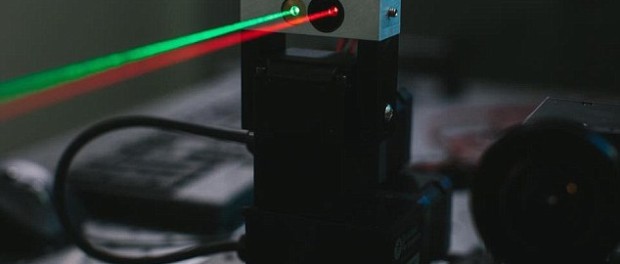
Facebook creator Mark Zuckerberg is building a fleet of drones that will beam lasers to Earth from 65,000 ft in the air, which will be capable of providing free internet to the world.
“As part of our Internet.org efforts, we’re working on ways to use drones and satellites to connect the billion people who don’t live in range of existing wireless networks”, Zuckerberg said.

BYPASS THE CENSORS
Sign up to get unfiltered news delivered straight to your inbox.
You can unsubscribe any time. By subscribing you agree to our Terms of Use
Latest Video
“Our Connectivity Lab is developing a laser communications system that can beam data from the sky into communities.”

Dailymail.co.uk reports:
‘This will dramatically increase the speed of sending data over long distances.
‘Normally you wouldn’t be able to see the actual beams, but for this demonstration we made them visible.
‘This is just one connectivity project we’re working on, but I was excited to share this with you.
The firm has already begun flying its giant drones designed to bring internet access to the world, Mark Zuckerberg has previously revealed.
‘As part of our effort to connect the world, we’ve designed unmanned aircraft that can beam internet access down to people from the sky,’ he posted on his Facebook page.
‘Today, I’m excited to share that we’ve successfully completed our first test flight of these aircraft in the UK.’
‘The final design will have a wingspan greater than a Boeing 737 but will weigh less than a car.
‘It will be powered by solar panels on its wings and it will be able to stay at altitudes of more than 60,000 feet for months at a time.’
‘Aircraft like these will help connect the whole world because they can affordably serve the 10% of the world’s population that live in remote communities without existing internet infrastructure.’
At Facebook’s f8 conference in San Francisco, the firm’s Facebook’s chief technology officer Mike Schroepfer revealed the firm thought drones were key to getting connectivity around the world.
‘This basically mean going to the sky,’ Schroepfer says.
He showed off the Aquila, an Internet-connected unmanned drone with the wingspan of a 737 and the ‘mass of a small car.’
At a summit in New York earlier this year, Facebook’s engineering director announced the vehicles will be closer in size to jumbo jets, than traditional drones, and they’ll soar at 65,000ft (19,800 metres).
Following the tests, it could then be just three to five years until the super-sized, solar-powered drones are hovering above remote parts of the world to provide internet access.
Yael Maguire, engineering director of Facebook’s Connectivity Lab, told the Social Good Summit that the planes will be ‘roughly the size’ of a Boeing 747, but much lighter than the popular aeroplane, which weighs around 600,000lbs (272,155kg) without passengers or fuel.
Facebook previously said the drones will be ‘relatively cheap’ – although did not specify a cost – and will be most effective for suburban areas that do not have the cables or infrastructure to carry internet or telephone signals.
The California-based tech giant has joined forces with Nokia, Qualcomm, Samsung and other tech firms to develop the planes in an initiative called Internet.org.
Today, around 2.7 billion people have access to the internet, which is just one third of the global population.
The members of the initiative said in a report that connecting the world is ‘one of the fundamental challenges of our time’ and they plan to do it using a variety of technologies, including drones.
‘When people have access to the internet, they can not only connect with their friends, family and communities, but they can also gain access to the tools and information to help find jobs, start businesses, access healthcare, education and financial services and have a greater say in their societies.
‘They get to participate in the knowledge economy,’ the report said.
A recent study by Deloitte found that the internet is already an important driver of economic growth in many developing countries.
Expanding internet access could create another 140 million new jobs, lift 160 million people out of poverty and reduce child mortality by hundreds of thousands of lives.
In terms of how this could be achieved, Mr Maquire has previously explained that Facebook is ‘looking at a new type of plane architecture.’
The drones are set to fly at 65,000ft (19,800 metres), because this altitude is a point where winds are at their lowest.
It’s also above commercial airliners, and even above the weather, and this means the drones will be able to safely stay in the air for months at a time.
‘These planes are solar-powered and they sit there and circle around, and have the ability to broadcast internet down.’
The large drones will be capable of broadcasting a powerful signal that covers a city-sized area of territory with a medium population density, according to Internet.org.
The large drones will be capable of broadcasting a powerful sThe drones will be tougher and able to fly for longer periods of time than balloons, while also being able to have their location precisely controlled.
In March this year, Facebook acquired British drone maker Ascenta for an estimated £12.5 million ($20.2 million).
The company is run by chief engineer Andrew Cox who has helped set records for the longest flights for unmanned aircraft powered by the sun.


